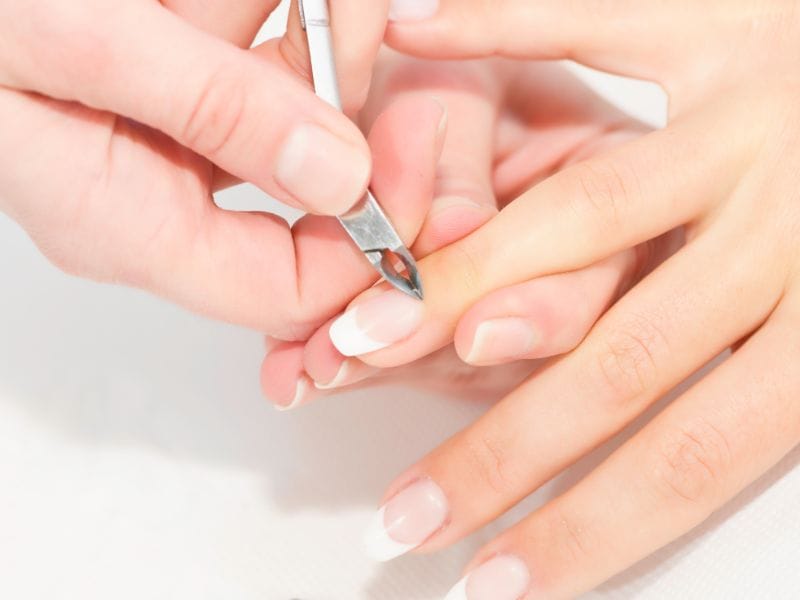
In the realm of hand and nail care, the significance of cuticle health often remains somewhat ignored. Yet these tiny protective layers hold the key to optimal nail health. Keep reading to delve into our comprehensive guide as we explore the reason behind bleeding cuticles, offering expert insights for prevention and healing.
Understanding the Significance of Healthy Cuticles
Cuticles act as a protective layer for our nails, playing a pivotal role in maintaining nail health. When the cuticle becomes damaged, resulting in bleeding, it can be both painful and unsightly. In addition, bleeding cuticles can be an open invitation to infections if not properly addressed.
Primary Causes of Bleeding Cuticles
Many factors contribute to bleeding cuticles. Recognizing the main culprits can pave the way for effective prevention:
- Dryness: Lack of moisture can cause the skin to become brittle, leading to cracks and bleeding.
- Excessive Manicuring: Aggressive trimming or pushing of the cuticle can cause damage.
- Environmental Factors: Harsh weather conditions, especially during the winter, can affect the skin’s health.
- Chemical Exposure: Using nail polishes or removers containing harmful chemicals can irritate the cuticle.
Gel Nails and Bleeding Cuticles
Gel nails themselves don’t directly cause bleeding cuticles. However, the process and maintenance associated with gel nails can exacerbate or contribute to cuticle issues. Here’s how:
- Application & Removal Process: The application of gel nails involves pushing back and sometimes trimming the cuticles. If done aggressively, this can cause trauma to the cuticle, leading to bleeding. Moreover, the removal process of gel nails often requires soaking in acetone, which can significantly dry out the skin and nails. Dry, brittle cuticles are more prone to tearing and bleeding.
- Chemical Exposure: The chemicals in gel nail polish and the acetone used for removal can be harsh on the skin and cuticles. Over time, frequent exposure can lead to dryness and weakening of the skin around the nails.
- UV Light Exposure: The curing process for gel nails involves UV light. While the primary concern with UV exposure is the risk of skin cancer, repeated and prolonged exposure can also dry out the skin, including the cuticles.
- Less Breathability: Gel nails create a more sealed environment than regular nail polish, which might reduce the nail’s ability to “breathe”. This isn’t about literal oxygen exchange (since nails don’t breathe), but rather about natural oil migration and moisture balance.
To minimize the risk of bleeding cuticles when getting gel nails:
- Ensure the technician is gentle, especially during the preparation phase.
- Moisturize cuticles regularly, especially after removal.
- Consider giving nails a break between gel applications to restore natural nail and cuticle health.
Expert Tips to Prevent Bleeding Cuticles
Protecting the cuticle from potential damage requires a proactive approach:
- Moisturize Regularly: Application of a high-quality hand cream or oil ensures the cuticles remain soft and supple.
- Limit Exposure to Chemicals: Choose nail products free from harmful toxins and always wear gloves when handling household cleaning agents.
- Opt for Gentle Manicures: If visiting a salon, ensure the technician handles your cuticles gently. At home, use sanitized and sharp tools.
- Stay Hydrated: Drinking adequate water daily promotes overall skin health.
Steps to Treat Bleeding Cuticles
If you find yourself with a bleeding cuticle, it’s crucial to act swiftly to prevent further complications:
- Immediate Care: Wash the affected area with warm water and mild soap. This prevents contaminants from entering the wound.
- Apply Antibiotic Ointment: This will aid in combating potential infections.
- Seal with a Bandage: Keep the area covered to shield it from external irritants.
- Avoid Aggravating Activities: Steer clear of manicures or using any nail products until the cuticle fully heals.
Embracing the Role of Nutrition
Believe it or not, your diet plays a role in the health of your cuticles. Nutrients such as biotin, zinc, and omega-3 fatty acids contribute to skin and nail wellness. Regularly consuming foods like eggs, fish, nuts, and seeds can bolster the body’s natural defenses against bleeding cuticles.
When to Consult a Dermatologist
In some instances, recurrent bleeding cuticles might be indicative of an underlying health issue. Conditions such as eczema, fungal infections, or psoriasis can manifest around the nail area. If you notice persistent problems or other alarming symptoms, it’s prudent to seek professional guidance.
The Take Home: Bleeding Cuticles
The state of our cuticles often goes overlooked, yet it’s a fundamental aspect of hand and nail health. Taking the time to nurture and care for them not only enhances our hands’ appearance but also safeguards against potential ailments. By understanding the causes of bleeding cuticles and incorporating preventative measures, we can ensure our nails remain as healthy as they are beautiful.
